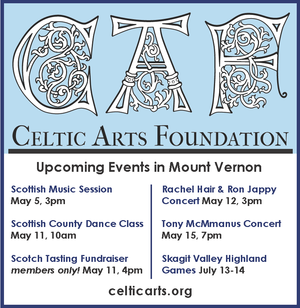La Conner could shine with art-themed energy infrastructure
February 21, 2024
Viewing parts of the electric grid, such as transmission towers and substations as public art is actually a decades old concept. The colored glass used in high-rise buildings since the early 1960s isn’t just for aesthetics. That technology was initially developed to help control the heat in the buildings.
The use of energy systems in art isn’t limited to very large structures like high-rises and transmission towers. Smaller pieces of energy infrastructure are visible to the public and offer surfaces on which art can be created and readily displayed.
By consistently making use of that fact, a community like La Conner could become a leader in public energy art. The town, the Chamber of Commerce, local galleries and individual artists could work together to create guidelines and incentives to encourage artistic uses of innovative energy systems. This concept encourages using infrastructure to create an art theme, similar to the way in which Leavenworth has consistently used its infrastructure to create a Bavarian village theme.

Public electric vehicle charging stations don’t have to be simple aluminum bollards. Posts for Level 2 chargers, and the larger boxes that cover Level 3 chargers, can be painted with motifs reflecting local culture and history. They could also be used as structures to support sculptures.
Modern light-emitting diodes, low-cost rechargeable batteries, and solar panels (or other sources of renewable energy capable of being installed without a grid connection) can be combined to create three-dimensional art. Simple kinetic sculptures, with moving and/or lit parts, can be made and installed without having to hook the sculptures up to grid electricity.
That particular group of technologies can also be integrated into functional, artistic public lighting structures. Although virtually any theme can be used, a concept that seems to be gaining traction worldwide is creating structures that look like plants, in which solar panels are incorporated as fronds, leaves or flower petals. Batteries are hidden in the stalks or trunks to capture energy from the solar panels during the day. That energy is then used to power LED lights during darker hours. The lights themselves can be mounted around the edges of the structure, to highlight the shape and to provide area lighting.
LED lights can be sufficiently energy efficient to be completely powered by the installed solar panels. They can be set to provide conventional light, or for a particular color, or to change colors. Such renewable, artistic, public lighting systems can be completely self-contained and grid-disconnected, making them useful for public safety lighting and wayfinding signage in remote locations that would otherwise be too expensive to connect to the electric grid.

Performance art is also amenable to the use of renewable and efficient energy systems. Large venues are replacing loud diesel generators with silent banks of batteries to power amplifiers and lights at outdoor concerts. In La Conner, small festivals, street walks and concerts could be created using the same idea: music powered by batteries, instead of loud generators. Taking this one step further, the town could even create a street walk or weekend festival showcasing renewable energy art.







Reader Comments(0)